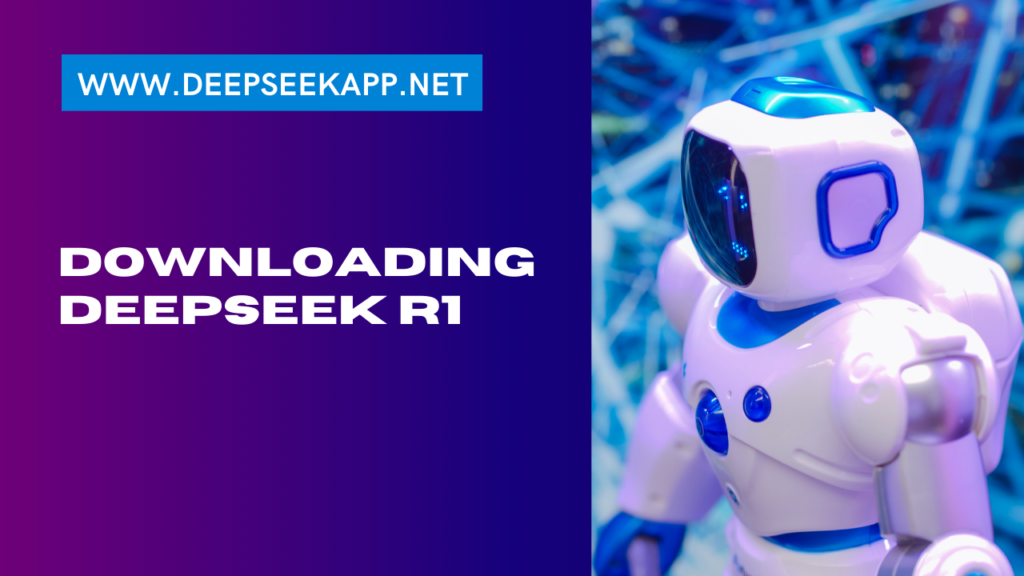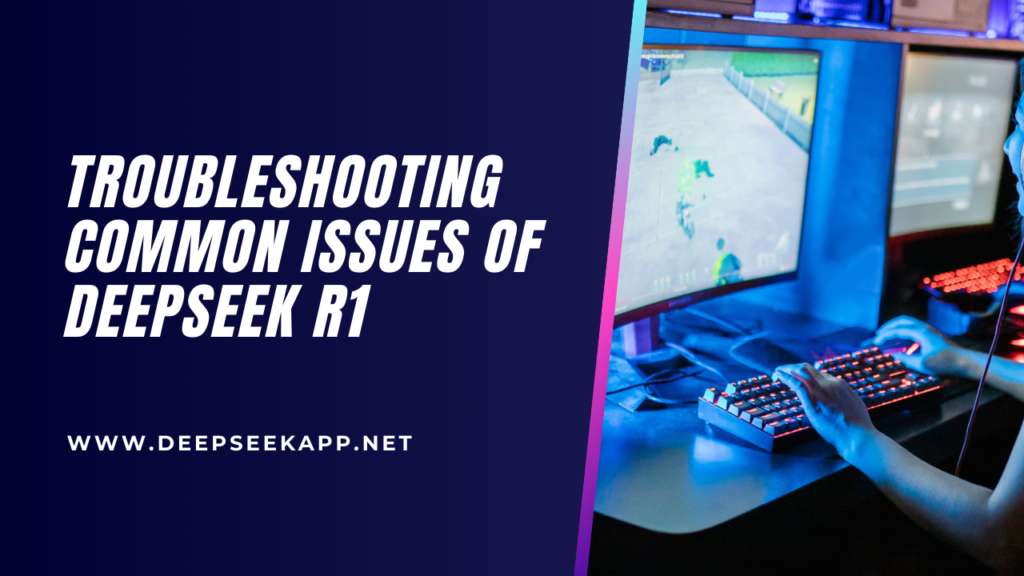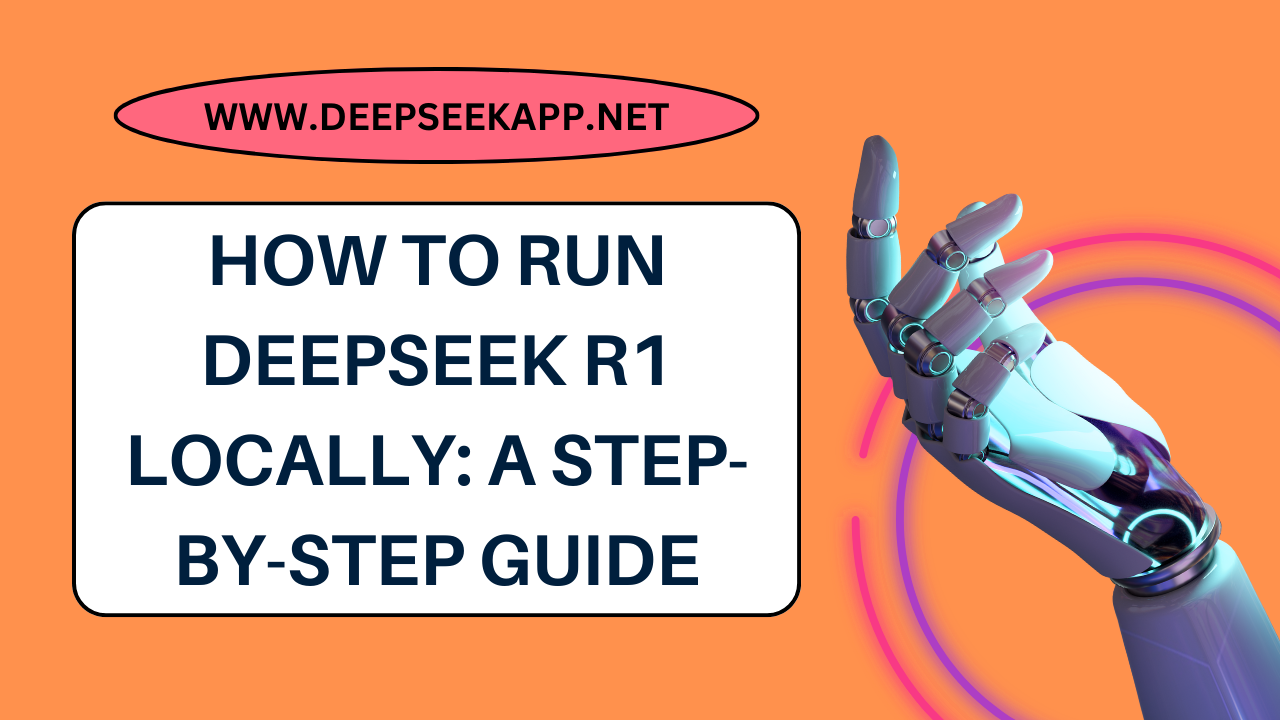DeepSeek R1, the new advanced language model developed by the Chinese AI startup DeepSeek, has garnered significant attention for its impressive performance in tasks such as mathematics, coding, and reasoning. In this guide, we will walk you through the process of running DeepSeek R1 locally on your machine, from prerequisites to execution. By the end of this guide, you’ll be able to leverage DeepSeek R1’s capabilities for your own projects.
1. What is DeepSeek R1?
Before diving into the technicalities of running DeepSeek R1, let’s briefly introduce it.
DeepSeek R1 is an open-source, cutting-edge AI language model, comparable to models like OpenAI’s GPT-4. It was released in early 2025 by the Chinese AI startup DeepSeek. Known for its efficiency and cost-effectiveness, it provides robust performance in natural language understanding, coding, and reasoning tasks. With DeepSeek R1 being open-source, developers and researchers can run it locally, creating diverse applications and tools.
2. Prerequisites
Running DeepSeek R1 locally requires some specific hardware and software. Here’s what you need:
Hardware Requirements:
- Nvidia GPUs: DeepSeek R1 is optimized for Nvidia GPUs, specifically the H800 series. Ensure that your machine has an appropriate GPU for accelerated performance.
- High RAM Capacity: At least 32 GB of RAM is recommended for smooth operation.
- Disk Space: You’ll need around 100 GB of free space to store the model files and related data.
Software Requirements:
- Operating System: DeepSeek R1 is compatible with Linux (Ubuntu) or macOS for local deployment. Windows users might need to use a virtual machine or Docker.
- Python 3.7+: Ensure that Python is installed and updated.
- CUDA Toolkit: Install the necessary CUDA and cuDNN libraries to support GPU acceleration.
- Pip: Python’s package manager, which will be used to install dependencies.
3. Downloading DeepSeek R1

The first step is to get the DeepSeek R1 model files onto your local machine.
- Visit the official DeepSeek GitHub repository: DeepSeek R1 GitHub.
- Download the model files using the
git clonecommand:git clone https://github.com/deepseek-ai/DeepSeek-R1.git - Navigate into the DeepSeek R1 directory:
cd DeepSeek-R1
4. Setting Up the Environment
Before running DeepSeek R1, set up the appropriate Python environment to handle dependencies.
- Create a Virtual Environment:
python3 -m venv deepseek-env source deepseek-env/bin/activate # For Linux/macOS deepseek-env\Scripts\activate # For Windows - Install Dependencies: Use pip to install the necessary libraries.
pip install -r requirements.txt - Check CUDA Installation (for Nvidia GPUs): Ensure that your CUDA installation is properly set up by running:
nvcc --version
5. Configuring DeepSeek R1
Once you have the model files and environment set up, you’ll need to configure DeepSeek R1.
- Edit Configuration Files: The configuration files are located in the
configdirectory within the DeepSeek R1 repository. Update the configuration to match your hardware setup (e.g., specifying the GPU ID, batch size, and memory limits). - Set Up API Keys: If you are connecting to an external API, you may need to input your API key in the
api_keys.jsonfile. Ensure that you follow the correct formatting.
6. Running DeepSeek R1
Now that everything is set up, you’re ready to run DeepSeek on your machine.
- Launch the Model: To start the model locally, use the following command:
python run_model.py - Testing the Model: After starting the model, you can test it by sending a query to the model’s API. Use the following sample Python script to interact with DeepSeek:
import requests url = "http://localhost:5000/ask" query = "What is DeepSeek R1?" response = requests.post(url, json={"query": query}) print(response.json())This will send a query to the model and print the response.
7. Optimizing Performance
Running DeepSeek on local hardware can be resource-intensive. To ensure that the model runs efficiently, you can tweak some performance settings.
- Reduce Batch Size: If you face memory issues, reduce the batch size in the configuration file.
- Offload Computation: If you have multiple GPUs, consider distributing the computation across them for better performance.
- Monitor GPU Utilization: Use tools like
nvidia-smito monitor GPU usage and ensure it is being utilized effectively.
8. Troubleshooting Common Issues of DeepSeek R1

If you encounter issues while running DeepSeek locally, here are some common problems and their solutions:
- Memory Overflow: If the model consumes too much memory, consider reducing the batch size or using a machine with more GPU memory.
- CUDA Errors: Ensure that your Nvidia drivers and CUDA toolkit are compatible with your GPU and the DeepSeek model.
- Installation Errors: If dependencies fail to install, verify that you have the correct version of Python and CUDA.
9. Scaling Up to Production
Once you have DeepSeek running locally, you can scale up to a more production-ready setup by deploying it in a cloud environment or integrating it into an application. Cloud platforms like AWS, Google Cloud, and Azure offer GPU-powered instances that can handle larger models and increased traffic.
- Docker Deployment: You can containerize the application using Docker for easier deployment across different environments.
- API Setup: Set up an API endpoint that can interact with your application, making it easier to integrate DeepSeek into a larger system.
10. Conclusion
Running DeepSeek locally offers the ability to harness the power of this advanced AI model for a wide range of applications. With the steps outlined in this guide, you can successfully deploy and utilize DeepSeek R1 on your own hardware. Whether you are experimenting with AI, building a new tool, or integrating the model into an application, the flexibility and open-source nature of DeepSeek make it an exciting addition to the AI landscape.
If You Have Any Query, Feel Free to Contact Us!

